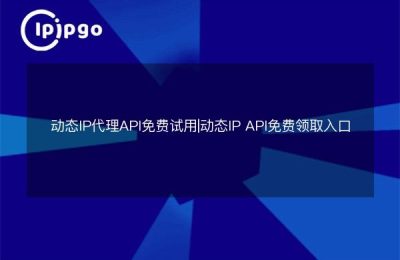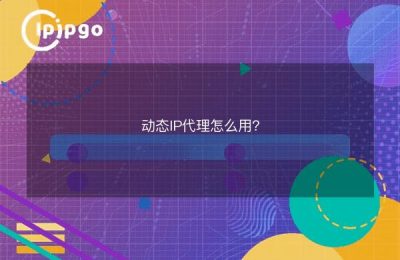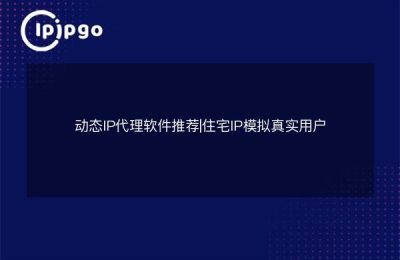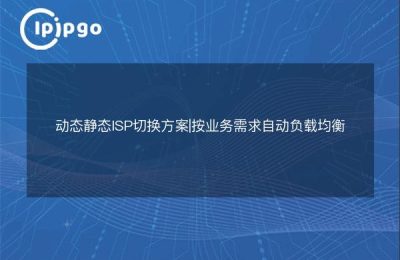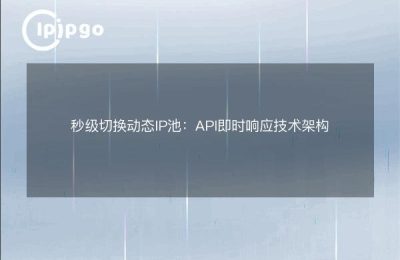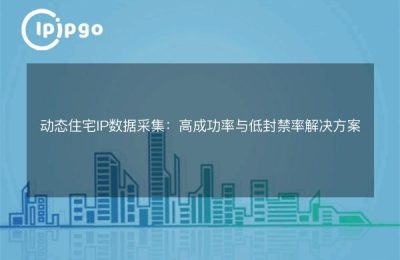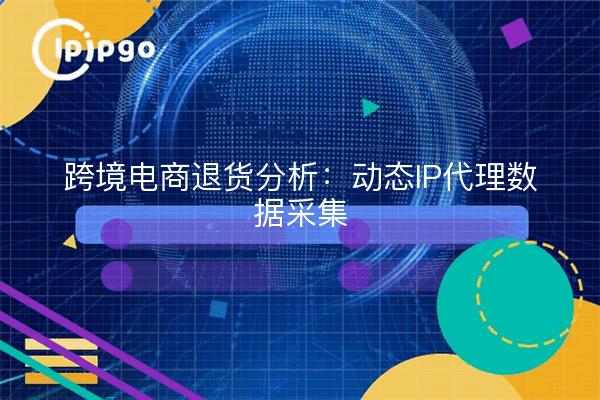
Behind the 18%-30% return rate, which is the biggest headache for cross-border sellers, there is a large amount of unexplored user behavior data. The traditional means of analysis is often caught in the predicament of "blind men feeling the elephant" - using a single IP to collect data to make decisions, like wearing sunglasses to find the key. In this article, we will use dynamic IP proxy technology to teach you how to see the real scene behind the returns.
First, why is your return analysis always stepping on potholes?
A mother and baby brands have found that the French market return rate remains high, conventional data analysis shows that the "size problem", but changed to use ipipgo dynamic IP simulation of real users in France access, found that theThe rate of poor material reviews is 2.3 times higher than that of German users. Here are three common misconceptions to be wary of:
| Types of misconceptions | Dynamic IP Solutions |
|---|---|
| Capture comments with server room IP | Switching residential IP to restore the real consumption scene |
| Looking only at the underlying platform data | Capture in-depth behaviors such as length of time on page |
| Ignoring geographical differences | Bind production lots by city dimension |
Second, dynamic IP acquisition four steps
With ipipgo's pool of 90 million+ residential IPs, we empirically tested the optimal operational process:
Step 1: Regional orientation
Select the top 3 areas for return rate (e.g. Texas, USA), set the "city level" location in the ipipgo background, and the system will automatically assign the local home broadband IP.
Step 2: Buried point collection
Deploy tracking code on the product page to record:
- Page closure time (warning required for <15 seconds)
- Size ChartViews
- Comparison frequency of similar products
Step 3: IP-Batch Association
By binding IP addresses to production batches through the API, specific distribution areas can be traced when a concentration of returns is found for a particular batch.
Step 4: Dynamic rotation
Every collection of 5-8 data automatically switch IP, with ipipgo's intelligent scheduling system to avoid wind control, the measured collection success rate increased to 98.7%.
III. Two real cases of improvement
Case 1: The Footwear Sizing Mystery
A seller found an abnormal return rate in Texas and analyzed it with a static IP to no avail. After switching to ipipgo dynamic IP to simulate local users, it was found:
- Size 38 users check the size chart an average of 3.2 times (1.8 times in other areas)
- 43% Return order stays on page <30 seconds
Optimizing the sizing tips resulted in a 21% drop in returns in this area.
Case 2: Mother and child material fiasco
In the analysis of the French market returns, the keywords of user comments were captured through dynamic IP, and it was found that the rate of "allergic reaction" was 4 times higher than that of Germany, and the bad comments were reduced by 62% after the improvement of the material description.
IV. Configuration recommendations for enterprise-level solutions
Recommended configuration options based on business size:
| operational phase | Dynamic IP Policy | Static IP Policy |
|---|---|---|
| Commodity research period | Multi-city rotational collection | Bind core competitor regions |
| Post-sales analysis period | In-depth tracking of high-risk areas | High incidence of fixed returns |
Seamless dynamic/static mode switching is possible when using ipipgo, and is recommended to be paired with its7×24 hours link monitoringservices to ensure data collection stability.
V. Frequently asked questions
Q1: Will I be blocked by the platform?
- Use of residential IPs instead of server room IPs (ipipgo measured block rate down 76%)
- Setting 5-8 second random request intervals
- Enable UA auto camouflage
Q2: How is historical data reused?
Data cleansing through the ipipgo Data Middleware API, for example:
POST https://api.ipipgo.com/v1/data/merge
A heat map of geographic-return reasons can be generated to predict new product risk areas.
Q3: How to manage multi-store data?
Assign separate IP segments to each store, for example:
- Store A: 192.168.1.1-192.168.1.50
- Store B: 192.168.2.1-192.168.2.50
Data segregation for store dimensions can be set up in the ipipgo backend.
With Dynamic IP Proxy technology, we have helped multiple sellers reduce their returns analysis cycle from 14 days to 3 days. Log on to the ipipgo website now for a free trial of the residential IP service and start your path to data-driven growth.

